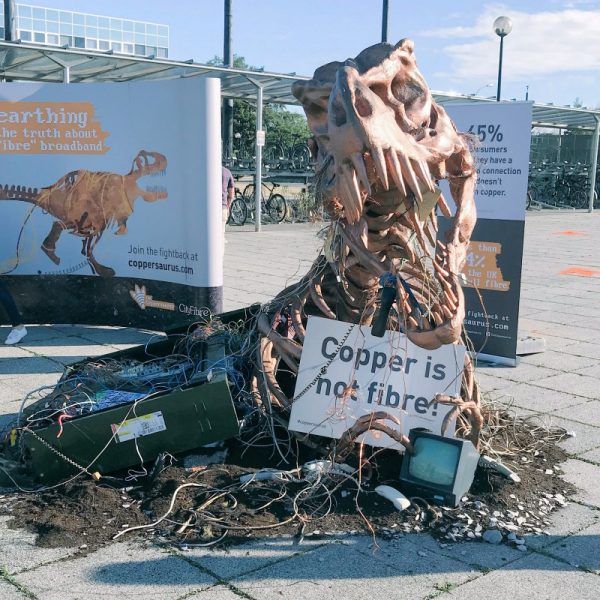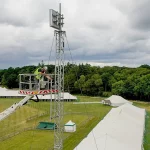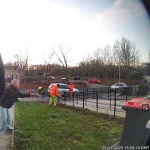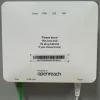Ofcom UK to Enforce Rules on Misleading Use of “Fibre” Broadband UPDATE

The UK telecoms and media regulator, Ofcom, will tomorrow begin enforcing new rules that will only allow broadband ISPs to use terms like “fibre” and “full-fibre” on their websites, and in contracts, if their network brings the fibre optic cables all the way to your home (i.e. FTTP, FTTH and also FTTB).
Many ISPs have historically tended to use “fibre” terminology to describe a wide range of internet connection technologies, including hybrid or part-fibre solutions that could involve either some copper wiring (e.g. FTTC) or even wireless connectivity over the final drop into homes. Such technologies can be significantly slower and less reliable than modern full fibre (FTTP) services, which take an optical fibre cable all the way to your home.
The situation has long created arguments between network operators, ISPs and consumers, which has only grown over the past few years as the roll out of multi-Gigabit speed capable Fibre-to-the-Premises (FTTP) lines have gathered pace. Put another way, if you think you’ve already got “fibre”, even if it’s only via a significantly slower FTTC (VDSL2) line, then you may be less likely to contemplate an upgrade to FTTP).
Advertisement
In the past, there have been numerous attempts to correct this, such as via an ineffective review from the Advertising Standards Authority (here) and a failed court challenge by CityFibre (here). But in 2021 the Gigabit Take-Up Advisory Group (GigaTAG) proposed several changes (here), including clearer labelling of broadband packages to help consumers understand the differences between technologies, which Ofcom finally sought to adopt at the end of 2023.
The regulator’s new guidelines for residential and small business services are now finally due to be formally introduced and enforced from tomorrow (16th September 2024), which is good news, even if they are arriving more than a decade too late. But it should be noted that they DO NOT COVER ADVERTISING, which is still under the remit of the ASA.
Ofcom’s New Guidelines on Fibre Terminology
We have decided to issue the following guidance under General Conditions C1 and C2. In summary:
➤ Providers should give a short description of the underlying technology of each broadband product offered at point of sale on the website, in Contract Information and in the Contract Summary, using one or two terms that are clear and unambiguous, such as ‘cable’, ‘full-fibre’, ‘copper’ or ‘part-fibre’;
➤ The use of the word ‘fibre’ on its own for describing the underlying technology is ambiguous, and therefore should not be used to describe the underlying technology; and,
➤ Providers should give a more detailed explanation of the underlying technology (for example through a link) so that consumers can understand what it means for them. It should also be given in a form that is accessible and easily understood.
Underlying technology information should be given to consumers irrespective of how they sign up for a service. Under our new guidance, those signing up online will be given this information on the broadband provider’s website. Those purchasing a service over the phone or face-to-face will be provided with this information in the Contract Summary and in the contract itself. A Contract Summary with key information on the service must be provided before the customer confirms the purchase.
We have concluded that this is the most proportionate approach to ensure appropriate information is provided to consumers and reduce customer confusion, while limiting the costs of implementation.
A sizeable chunk of the industry, particularly alternative full fibre networks, have already welcomed the change. But a question mark remains over how much of a positive impact this will actually have, not least because it’s trying to change a perception that has long since become established in the consumer subconscious, where the meaning of “fibre” has been diluted over many years of misuse.
Lest we forget that most consumers typically pay more attention to things like service speed and price than industry jargon and technology acronyms. Otherwise, we’ve already seen some signs of ISPs adjusting their approach.
Advertisement
For example, Sky Broadband said last week that they’d now be “describing broadband technologies as Copper, Part Fibre or Full Fibre” (Copper being ADSL, Part Fibre being FTTC/G.fast and Full Fibre being FTTP) – Sky’s packages have been re-labelled accordingly.
UPDATE 16th Sept 2024 @ 7:11am
The first comments have come in from network providers.
Jarlath Finnegan, CEO of AllPoints Fibre, said:
“Ofcom’s new industry guidance is welcome. We have been saying for some time that consumers are being misled by providers who sell part-copper connectivity as ‘fibre’. We now need the Advertising Standards Authority to immediately follow suit. It’s little surprise that consumers aren’t engaging more heavily with the market when terms like ‘fibre’ are being used in an unclear way.”
Kevin Murphy, CEO of G.Network, said:
“We welcome Ofcom’s new enforcement measures on misleading use of fibre broadband terminology. As a provider committed to delivering genuine full-fibre services, G.Network supports this initiative to ensure transparency and accuracy in the market. These rules will help consumers make more informed decisions and recognise the true value of full-fibre broadband, aligning with our mission to offer high-quality, reliable connectivity.”
Mark is a professional technology writer, IT consultant and computer engineer from Dorset (England), he also founded ISPreview in 1999 and enjoys analysing the latest telecoms and broadband developments. Find me on X (Twitter), Mastodon, Facebook, BlueSky, Threads.net and Linkedin.
« ISP iDNET Launch 1.8Gbps and 2.3Gbps UK Broadband Plans via FullFibre Ltd






















































Slow clap for the regulator, Too little, too late, as usual.
Typical useless Quango. Far Too late, and then pretending they are the heroes for introducing description change that was simple to do 15 years ago.
Spot on
Yep, its time for AWFULCOM & AWFULGEM to be disbanded and replaced with a consumer focused entity.
LOL, useless, all these so-called regulators are a waste of time.
What is the point of it now?
sigh.
Nice to know OFCOM is fixing a problem 15 years after industry reported it was a problem / a problem likely to get worse.
Issue now is that it’s caused so much market confusion, people don’t know the difference without being educated. Most of my family I have had to explain that they don’t have “fibre broadband” when they have told me they do…
With the way some of the industry has been allowed to get away with calling their service fibre, technically they could call dialup fibre on the basis that there is fibre in some element of it!
fttp btw is fttp narrowband…..
FTTC should have simply been called “High Speed Broadband”. Marketing FTTC as fibre should have fallen foul of the sale of goods act.
In most other European markets they called it ADSL and VDSL… Not sure why the UK doesn’t like calling the technology by its name. It was the same for UMTS and 3G, or LTE and 4G etc
I’m all for plain english where possible but the UK does like to dumb things down far too much. I agree, we should have used the acronyms and explained the meaning.
Another example is the smart meter fiasco. There are two standards, SMETS1 and SMETS2. The official public facing smart meter checker doesn’t use those terms, it uses nonsense like “the smart meter data network” which could apply to either.
So when I know I have a SMETS1 meter and I put my details in, it says “your meter is connected to the smart meter data network” (which I know because it works with my current supplier) but doesn’t clearly tell me if it has been remotely upgraded to SMETS2 and will work with all suppliers.
It will be interesting to see who fails to meet the deadline. Even Zen are still giving the impresson of mising with less that 24 hours to go.
OFCOM said: “terms that are clear and unambiguous, such as ‘cable’”
“Cable” is a generic and highly ambiguous term. I have Openreach FTTP, and it’s delivered via a fibre cable that comes into my home.
Even if you take the view that “cable” implies “cable TV network” (DOCSIS), that can be delivered via either a coax cable or a fibre cable (RFoG).
I suspect providers will adopt the term “hybrid fibre”. It sounds like fancy modern technology, e.g. hybrid cars.
The problem is there is no killer application for 1 Gb internet, and consumers have little incentive to upgrade from ftpc. Consumers are attracted to benefits and no tinkering with classification is going to make fttp attractive.
I don’t think OFCOM want to go that deep.
The term cable is fine IMO.
Cable is coax. It covers various different versions of DOCSIS via coax.
RFOG is full fibre. The fact it has a DOCSIS signal is pretty irrelevant.
I don’t see OFCOM insisting on differentiating between GPON, XGS-PON, point-to-point fibre, etc. it’s simply full fibre.
The same way OFCOM aren’t insisting on differentiating between VDSL2 & G.Fast.
It’s not about the technology used but by the physical infrastructure used to deliver it.
Cable is coax and RFOG is full fibre.
VDSL and G.fast are identical in every way that matters – they are both cabinet based deployments with the same amount of fibre/copper mix. There is no need to differentiate. One is just a potentially faster version.
“Cable is coax and RFOG is full fibre” perhaps shows why this whole debate is nonsense. In terms of performance both systems are essentially identical with the only difference being where the fibre/coax conversion takes place. It falls short of any true FTTP service, and calling RFOG “full fibre” is even more misleading than the original use of the term “fibre broadband” ever was.
Ivor. BPON. 622 down, 155 up, split between however many premises. Still full fibre. RFoG is FTTP/H. A fibre cable arrives at the property. To move it to XGSPON is a change of equipment either side. This is purely about physical layer. If we start going into performance it gets overly complicated.
BPON – also not a technology that was ever commercially deployed in the UK as I understand it, though it would be “full fibre” if it were. The handful of poor sods restricted to “only” 300Mbit on Openreach are still using GPON equipment.
I think this whole “what is fibre” argument is nonsense, as I said before, but if we must have it then I think it’s easy enough for the likes of Ofcom or the ASA to insist that it must be fibre to the premises *and* it must be some form of PON or active ethernet. That rules out RFOG which is essentially indistinguishable from HFC in terms of (lack of) performance. Not that it matters in the longer term as VM will convert these to actual *PON anyway (and then it deserves to be called full fibre)
Worth pointing out that it was Virgin who started this mess when they rebranded their HFC network as “fibre optic” for advertising purposes (I seem to remember ads where they used those words and displayed a picture of a coax cable, adding to the confusion).
This was in the late 2000s, where BT’s FTTC was still confined to a test lab in Suffolk and wouldn’t be deployed for a little while yet.
To be fair to Virgin, at least network could deliver gigabit speeds when they called their network “fibre”. Still didn’t agree with it but then FTTC and even some fixed wireless providers started using the term fibre.
OFCOM maybe should have mandated superfast (24-100Mbps) and ultrafast (100mbps+) as the definitions for speed and only fibre term for fibre to the home / building.
it wasn’t delivering anything like that back then. They had only just announced 50Mbps and they had to introduce “traffic management” i.e. download or upload too much and you are throttled for a few hours.
@craig they were calling it “fibre” when it delivered 50mbit speeds and docsis3.0 hadn’t even been considered.
Can we get people to stop referring to their broadband as “WiFi” too?
I doubt it. WiFi is now being used as a generic term in much the same way as people used Hoover when referring to a vacuum cleaner. I doubt if that many people actually use the ethernet connections on their routers these days anyway.
Indeed. Even on Coronation Street a few years ago they were saying “the wifi is down”.
God that is a massive bug bear of mine
Or even their mobile signal, hear that quite often.
I wish, trying to explain to some people that Wi-Fi is not broadband is as if I am trying to teach them Nuclear physics.
Just take away any ref to the delivery method from the package description.
“such as ‘cable’, ‘full-fibre’, ‘copper’ or ‘part-fibre’;”
Too complicated, needs to be much simpler:
Rubbish
Slightly less rubbish
Get this one if you can
I should say I’m joking, but in reality there are people who struggle with what we call basic network terminology.
I’ve had difficulty trying to explain to someone why despite paying for a 40mbps why they’re only receiving 10mbps and that complaining to their ISP isn’t going to magically get them the 40mbps.
Calling FTTC “Fibre” persuaded many to upgrade who may not have done otherwise, so increased profits when that was the top tier available.
This has now served its purpose though, as there’s now a new top tier available, which the industry would like you to pay more for.
Consumers are now being told that they don’t have what they thought they had. If they want what they’re already paying for they’ll have to upgrade again, paying more.
The supposed regulator knew that they were selling us lemonade described as champagne 15 years ago. Their inaction was a decision, not an accident.
Ofcom is just serving its paymasters, shifting the goal posts when it is likely to increase rather than decrease revenue for the industry. It doesn’t serve consumers, if it did then we’d never have got here.
Available to some, not all. There are still 30% of us, including in urban areas, who live in fibre deserts (while others have multiple FTTP options to choose from)!
The problem is, when you say to some people about getting fibre, they say they already have it and no matter how you try to explain it they still think they have Fibre.
So if people don’t change to FTTP, blame Ofcom, Openrerach and any other organisation that made people think they have fibre.
It says on the openreach cabinets, fibre is here, and those posters have been on the cabinets for over 9 years
FTTC was only called “Fibre” because vermin media had years before convinced Ofcom that docsis was “fibre” because it was fibre most of the way to the customer.
Then when BT brought out FTTC they were able to go “I guess this must be fibre then right???”
The mistake was the original judgement allowing vermin to call docsis fibre.
Too little, too late. I’ve been in the industry since 2009 and back then, FTTC was regularly advertised as things like Fibre 1, Fibre 2, Fibre 40, etc. Customers grabbed the word “Fibre ” and ran with it. They, OFCOM and the providers should have done something about it back then when these technologies were in their infancy.
I have TalkTalk 150mbps broadband which claimed to be full fibre but still has a separate modem, feed by a copper cable/terminal which isn’t quite as advertised. But I also have ‘unlimited free’ national and local calls: if your call goes past 1 hour you pay at premium rates for the extra minutes, and that includes time spent holding for doctors atonement systems etc.
Sounds like GFast to me not full fibre
Full fibre does not have any copper involved at all
Sounds like g.Fast
Just checked the BT website and it still labels the FTTC plans as Fibre 1, Fibre 2 etc. – there is a small piece of text above the plans stating “All plans shown use
part fibre technology” – is this really complying with the new rules? Consumers are still going to see “Fibre” as the most prominent part of the plan description.
Was my first thought to check this too, as someone who was previously on a BT “Fibre” plan even tho it was just VDSL. I knew what was available before I spoke to BT in the first place, but the sales rep was convinced I was getting a proper fibre connection even tho I explained to them multiple times that if the max guaranteed speed they could offer was 58Mbps this was definitely not a full fibre plan and even showed them the BT wholesale site on my phone.
The full description from BT is:
“Part fibre broadband uses powerful fibre optic cables to connect your street cabinet to your local telephone exchange. Copper cables then run from the street cabinet directly to your home. It’s also known as ‘fibre to the cabinet’ (FTTC).
Part fibre broadband is more reliable than copper broadband, and is capable of speeds up to 76Mbps.”
This is just as bad, if not worse in my opinion.
– All internet connections obviously use fibre in some capacity (between exchanges, backhaul fibre networks, data centre networks). By this logic it’s acceptable to advertise satellite connections like Starlink as fibre because the base station the satellite talks to is connected via fibre (which would be ridiculous).
– VDSL suffers from the same reliability issues of ADSL (e.g. water in the pits, crosstalk, the fact that most of the copper cable in the streets is decades old and deteriorating).
– The copper cables don’t run “directly to your home” they are likely spliced in several different locations and if you are in an MDU the cable is probably run to a distribution panel and be re-terminated before it reaches the BT master socket.
As the article says, there are many people (usually older) who think that their broadband is actually fibre when it is more likely to be ADSL (usually because it comes directly from the local exchange) or FTTC where the fibre comes to a “local” cabinet which itself could be over a mile away from the house.
There needs to be a massive (and expensive) advertising campaign to re-educate the masses of the erroneous description of their broadband service.
I have just seen an advert on NextDoor (https://nextdoor.co.uk/) advertising Airband as “fibre” – it isn’t, it is wireless.
Saw some Airband FTTP today.
Wow, you are on Nextdoor? I got a leaflet though my door a few months ago saying our local hairdresser is on there.
From what I have heard about Nextdoor, I think I will stay well clear. I doubt many people around here are on it anyway, if they are then I would go on it to tell them to shut their dogs up.
In fairness to them… It’s as much fibre as DOCSIS or VDSL – or even 5G.. fibre to the cabinet or cell tower 😉
I remember the Isle Of Wight having Wireless Fibre which they called Wibre.
About time, Stop VerminMedia calling its crappy coaxial cable ‘Fibre’ when its not.
Issue is they do now have FTTPn (forget what it’s actually called) where the Coxal node is at the house so basically you have your own dedicated docsis cab at your house and isn’t been shared with other streets
Unsure if virgin website can tell if your getting shared muti street level coxal docsis or dedicated FTTP coxal node
I have FTTP on my pole now so I have options to move away from virgin
but I do like the semi static ip address from virgin (as long as your mac address doesn’t change it stays static, if modem is off for more then 5 days that results in a new ip as well) unsure if I can get a provider to give a static ip for good price on a openreach provider
Lexx the RFoG ONU is a media converter, nothing more. Other properties can and do consume bandwidth with normal use and ruin the SNR on an RFoG segment with in-home generated noise. On the HFC network there can be multiple nodes combined onto a single RF port, each node contributes noise and consumes resources as they’re dumb media converters using RF to modulate a laser and using modulated laser output to generate RF depending on direction.
RFoG can’t pick up noise between home and splitter from badly terminated tap ports or amplifiers as there aren’t any but can and does have issues on the return path. The dedicated part is exactly the same on both RFoG and HFC: your drop cable.
I’m not against this and as others have said it’s a little late.
But we should really be educating people about asymmetric vs symmetric, latency, contention, peering etc which are what really matter.
There are plenty of ‘full fibre’ connections which are asymmetrical, with VDSL2 speeds and poor peering. Having them run over fibre instead of copper makes no practical difference.
This is clearly a case where the ASA has failed to do its job for many years, allowing telecoms to call their cable and/or VDSL fibre broadband, when it clearly wasn’t. It’s sad that Ofcom had to intervene on this, when it really should have been the job for ASA.
It’s not older people, Mr Jones. I’m in my 70’s and I know the difference. The real problem is people in this country have always had a downer on education. Most of them have difficulty opening a damned door, let alone understanding anything technical. They don’t want to know, they just want it to work. Misnomer is rife. My bugbear is “ethernet cable”. Considering ethernet can be passed over twisted pair, coaxial & fibre optic, what exactly is an ethernet cable? This is why we need competent regulation to ensure people are not conned.
I have no sympathy to the providers who sold VDSL as fibre and now having issue upgrading their customers to actual fibre. However, I have every sympathy for the ISPs who never lied to their customers and go caught up in this.
I think Ofcom should force all ISPs who sold non-FTTP as fibre to send a letter to their customers and explain what they sold as fibre is not fibre.
So ISPs can advertise VDSL as fibre broadband, and when you sign a contract for the advertised service it’s not going to be fibre.
What a mess. This will only cause MORE confusion.
The ASA should never have allowed anything other than full-fibre to be called fibre in the first place.
Everyone predicted it would make no sense one day when FTTH was available.
“unambiguous, such as ‘cable’, ‘full-fibre’, ‘copper’ or ‘part-fibre’;”
Does that mean some will need to be described as “aluminium/copper hybrid” in order to be completely unambiguous?
@NE555 agree ‘cable’ could meany any of the above.
Wired, part-fibre, full-fibre, wireless?
I have got fibre (fttc) but I haven’t got fibre. As far as I am concerned I DO have fibre though not full fibre.
15 Years too late, too late! Useless Ofcom!
Also hate when they keep saying up to FTTP 160/330 speed. Will I get 160 full speed or will I get up to 145 variable speed on full fibre?
Remember FTTP and FTTH are two different. Full Fibre should be class as both same speed. Half Fibre should be class as fast download but slower upload.
FTTP and FTTH are used interchangeably, in the UK we seem to have settled on using FTTP. There’s no universally accepted difference between the two terms so it can’t be said that they refer to different things.
VMs website still advertises fibre in DOCSIS-only areas, so what do Ofcom do now?
@Phil The problem is that is is still a shared medium. So what you get at any one instant depends on who else is on and what they are doing.
This is a completely ridiculous and misguided set of rules that do not help consumers in any way.
Adding more descriptions of technology is in no way consumer friendly.
Consumers mostly do not, and should not care about technology; just the outcome and price.
If it’s fast enough, and the price and service meets their needs, consumers are generally happy.
This is an example of a failing industry, investing billions of borrowed money on false expectations of take-up. The regulator, unbelievably, as well as the government, have gone along with it.
The prevailing assertion that fibre is good and everything else is bad is outdated. I don’t care how my gigabit connection gets to my house, as long as it’s a gigabit, because that’s what I pay for, and occasionally I download large data. Other than that, WiFi around my house is WAY more important, and largely ignored by Ofcom DSIT and broadband providers.
@Dave If it’s a gigabit connection, mate, it most certainly isn’t “fibre”.
The “who cares about the technology” argument went by the wayside long ago. Even BT stopped using it.
“Other than that, WiFi around my house is WAY more important, and largely ignored by Ofcom DSIT and broadband providers.”
Ignored? It’s essentially how everyone’s differentiating themselves now that they all offer more speed than you need. Numerous ISPs offer mesh products and some sort of “guarantee”. Look at how BT rushed to be first to announce they will be doing WiFi 7, and may be the first to get product into homes depending on how Zen get on.
Openreach has for years produced a guide for builders that explains how to get that fibre into a new build and then the best practices to get it around too, ie centrally placed router, lots of ethernet sockets, etc.
I don’t know why Ofcom would need to care, outside of its responsibility to enforce the spectrum compliance / EMC regulations. We have a free market with equipment at all price points and performance levels.
I can feel one of those 1970s public information films coming-on . . . the “Purple and Blue cross, expletive deleted code”. Something to observe on a whole variety of occasions which involve the telecommunications industry:-
1. When fibre overbuilders have just installed at the end of the road, but have given your QTH a stiff ignoring
2. When the near monopoly Telecommunications provider has withdrawn the G. Fast service from your roadside box and has substituted FTTP “On demand” and you are 250 yards away from the roadside box.
3. When the same near monopoly supplier, contacted you to say that Digital Voice has about to be introduced to your area and you are still waiting for something to happen 9 months later.
Maybe the overbuilder saw your comments on https://www.ispreview.co.uk/index.php/2021/08/silly-dispute-over-virgin-media-o2s-broadband-cabinet-placement.html#respond and wanted to avoid hassle.
BT is still advertising VDSL as fibre under their broadband deals page:
Exclusive offer!
First 3 months free
on Fibre 1
I was worried if my highly -ve view of Ofcom (and the rest of the OfXx..xs) was just me. Boy do they tackle the really important issues.
What a farce and total waste of resources, people, time, money and O2 ( the breatable type). Ofcom need sacking when doing things like this rather than pursuing common sense and practice for the consumers – all they are doing is costing consumers for next to no benifit, let alone real benifit. Rather the like the ‘banning’ of mid contract price rises, they should be prosucuted by tranding standards.
Anyone got any reasonable defence for Ofcom?
Ps ‘cable’ :
A strong, large-diameter, heavy steel or fiber rope.
Something that resembles such steel or fiber rope.
A bound or sheathed group of mutually insulated conductors.
‘Fibre’, oh dear, nylons anyone?
For me fttc, fttp are fine, fibre being date transmitted over optical (cant really be anything but glass or clear plastic) now as for co-ax, thats not optical…. is it.
Ditto ADSL/VDSL.
For punters/ignorant consumers (that are too lazy to educate themselves a little bit, ‘caveat emptor’, and if you ask the right questions you stand a chance of getting the right answer) but then I tens not to trust sales pitches until I know something about the technology and or service, ’cause the devil (or weaseliness) is always in the small print, just like cookies and 3rd parties.
Maybe I’m odd, I like to know what I’m getting particularly when its costing me.
Wow……….only a decade too late to the party……then again this is OFCOM